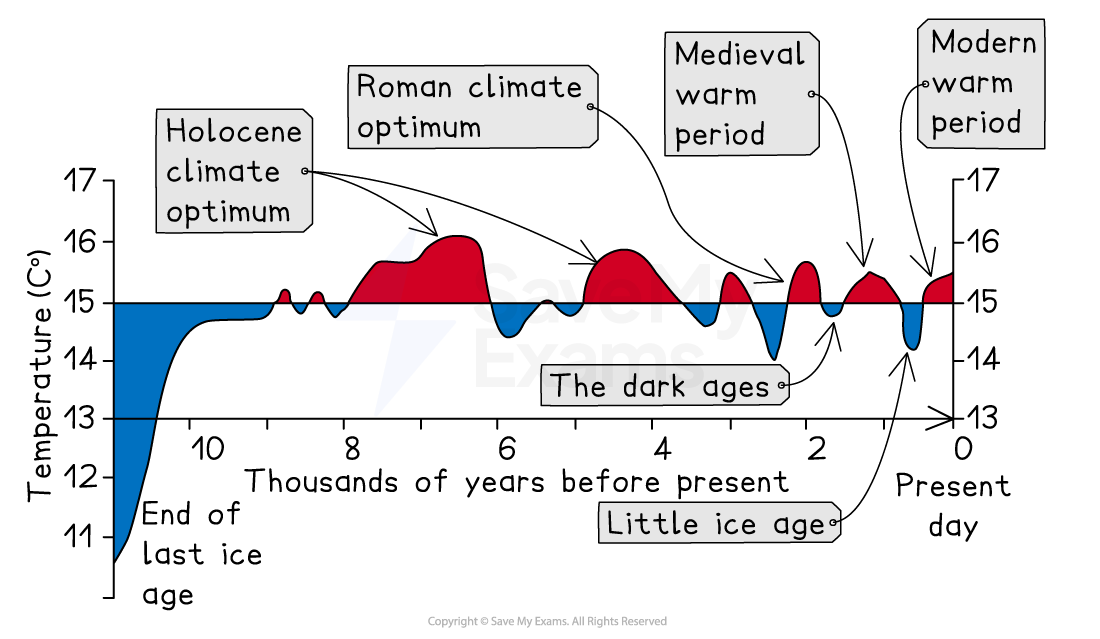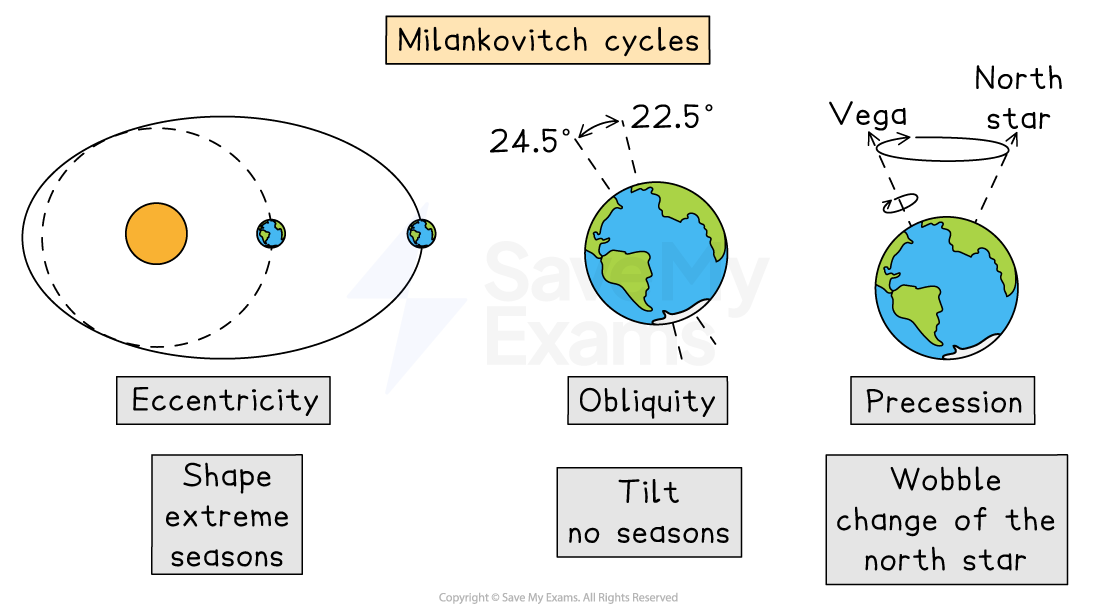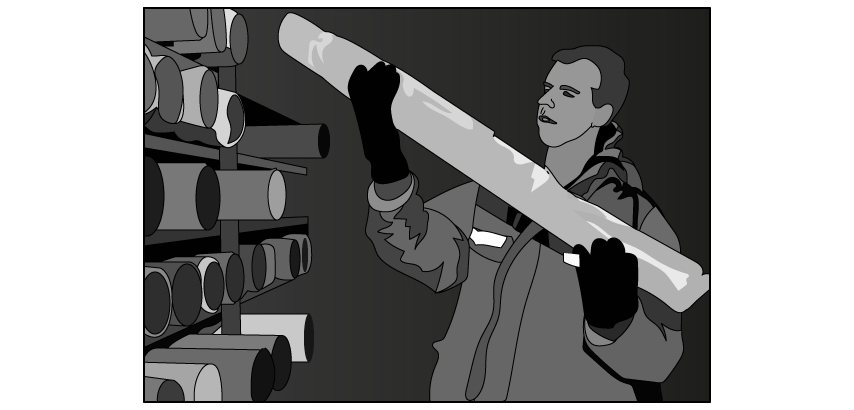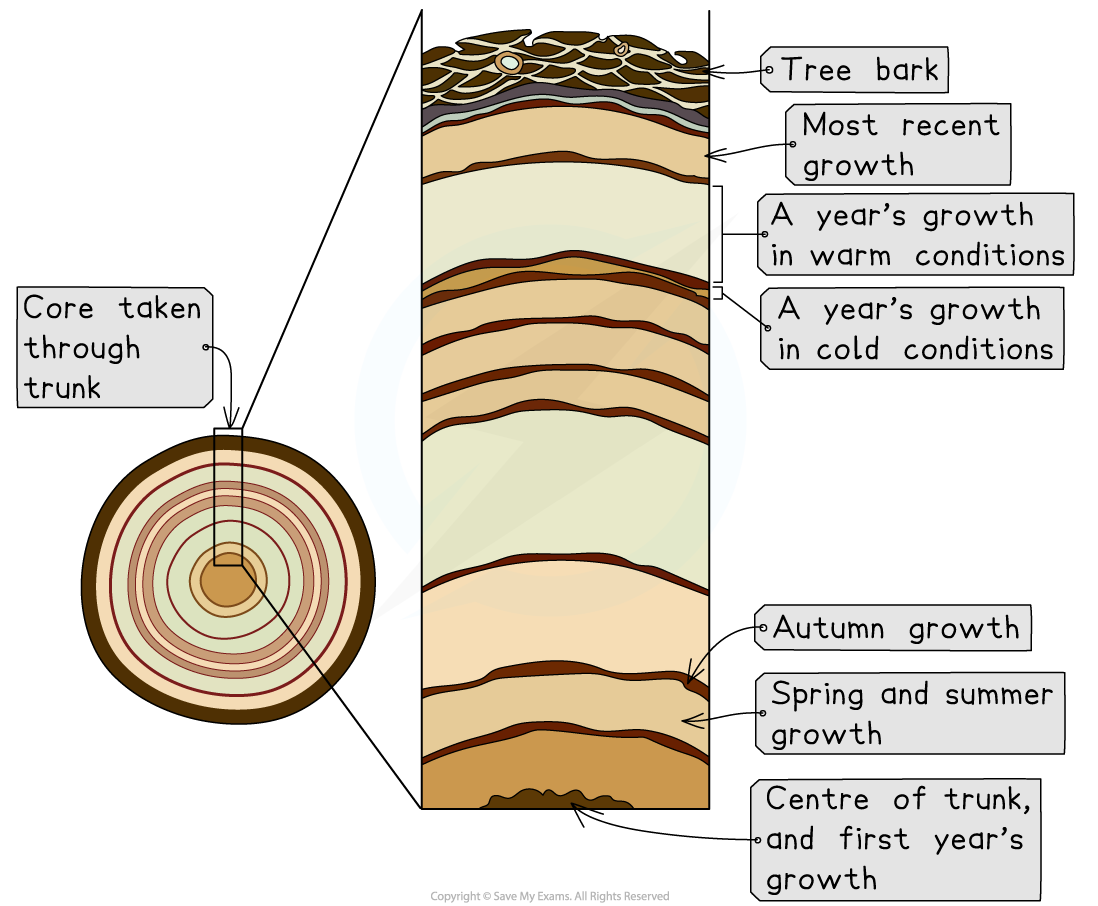Climate Change & Global Warming (WJEC Eduqas GCSE Geography B): Revision Note
Exam code: C112
Specification Link
The notes on this page cover parts 2.4.1 and 2.4.2 of the WJEC Eduqas GCSE B Geography.
2.4.1 How has the climate changed during the Quaternary period?
An overview of how climate has changed to include glacial and inter-glacial periods.
2.4.2 What are the causes of global warming?
Natural processes that create the greenhouse effect.
Evidence for global warming, including the role of human activity as one contributory factor in global warming.
How has climate change since the Quaternary period?
The global climate conditions of the Earth range over time leading to colder and warmer periods
The last 2.6 million years are the Quaternary period, when there have been 60 cold periods and warmer interglacial periods
The last ice age ended approximately between 20,000 and 12,000 years ago
Global climate over time

Ice core data: changes in temperature over the last 11,000 years
As well as the historical changes in climate, average temperatures have increased annually since the 1980s
Recent climate change

Natural processes leading to the greenhouse effect
The greenhouse effect is essential to the survival of life on Earth:
Greenhouse gases in the atmosphere allow short-wave radiation from the sun through to the Earth's surface
This is absorbed by the atmosphere and Earth's surface and re-radiated as long-wave radiation
The greenhouse gases absorb some of the long-wave radiation (which we feel as heat)
They stop it from radiating out into space
This maintains the Earth's average temperature
Without the greenhouse effect, the average temperature would be -18oC
Greenhouse gases
Water vapour - evaporation from the oceans/seas and plants
Carbon dioxide – volcanic eruptions, wildfires and respiration
Methane – is emitted from oceans and soils as part of decomposition; termites also emit methane
Nitrous oxide - soils and oceans
Natural causes of the greenhouse effect
Milankovitch cycles
Milankovitch cycles are long-term changes to the Earth's orbit and position
This changes how much solar radiation the Earth receives

The Earth's orbit changes every 100,000 years a more circular orbit leads to cooler periods and an elliptical orbit leads to warmer periods
The Earth's tilt varies every 40,000 years and the greater the tilt, the hotter summers are and colder the winters are
Every 24,000 years the Earth wobbles on its axis and this can affect the seasonal temperatures
Volcanic eruptions
Large-scale eruptions lead to vast quantities of ash being ejected into the atmosphere
Ash in the atmosphere blocks solar radiation, leading to a decrease in temperatures
Sunspot activity
Increased sunspot activity is linked to higher average temperatures
Atmospheric dust
Asteroids and meteors entering the Earth's atmosphere may increase the amount of dust, which decreases temperatures
Evidence for global warming
The evidence for global warming comes from:
Ice cores which trap ash, air bubbles and microbes

Preserved pollen
Historical sources such as diaries, art and weather records
Tree rings

Recent evidence for climate change
Recent evidence of global warming includes:
Glaciers reducing in size and melting ice: Arctic Sea ice is at an all-time low
Rising sea levels:
Melting ice adds more water
Warm water expands in volume
Plant and tree flowering patterns are changing
Bird migration times have altered
Shorter hibernations
Bird nesting occurring earlier
Human activity and global warming
Human activity is one contributory factor in global warming
It is increasing the amount of certain greenhouse gases in the atmosphere:
Carbon dioxide (CO₂) levels in the atmosphere have increased by more than 100 parts per million (ppm) to 420 ppm in 2020
Methane, nitrous oxides and chlorofluorocarbons are also increasing
Increased amounts of greenhouse gases have led to the enhanced greenhouse effect:
Less long-wave radiation (heat) can escape the atmosphere
Average global temperatures have increased over 1°C since pre-industrial times

Greenhouse gases from human activity
Carbon dioxide (CO₂)
Burning of fossil fuels – power stations, vehicles
Burning of wood
Deforestation - trees utilise CO₂ in photosynthesis. The fewer trees there are, the less CO₂ is removed from the atmosphere
Methane (CH₄)
Decay of organic matter – manure, waste in landfill, crops
Released by cattle and during rice cultivation
Nitrous Oxide (N₂O)
Artificial fertilisers
Burning fossil fuels
Chlorofluorocarbons (CFCs)
Aerosols
Refrigeration units
Air conditioning
Fossil fuels
Fossil fuels account for almost 50% of global greenhouse gas emissions
Fossil fuels are used in transportation, construction, heating, manufacturing and energy production
Agriculture
Deforestation to clear land for grazing and crops leads to less CO₂ being absorbed during photosynthesis
The production of fertilisers and pesticides uses fossil fuels
Increased raising of dairy and beef cattle as well as rice cultivation increases methane emissions
Artificial fertilisers also increase the amount of nitrogen oxide released into the atmosphere
Construction
The manufacture of cement releases CO₂ – it is made from limestone, which contains carbon
Transport
The increasing global population has led to increased numbers of cars, lorries and planes
Most transport uses petrol/diesel which comes from oil as fuel; this releases CO₂.
Examiner Tips and Tricks
Remember, not all scientists agree about the causes of climate change. There are a few scientists who argue that global warming is the result of the Earth's natural climate pattern and not the result of human activities.

Unlock more, it's free!
Did this page help you?